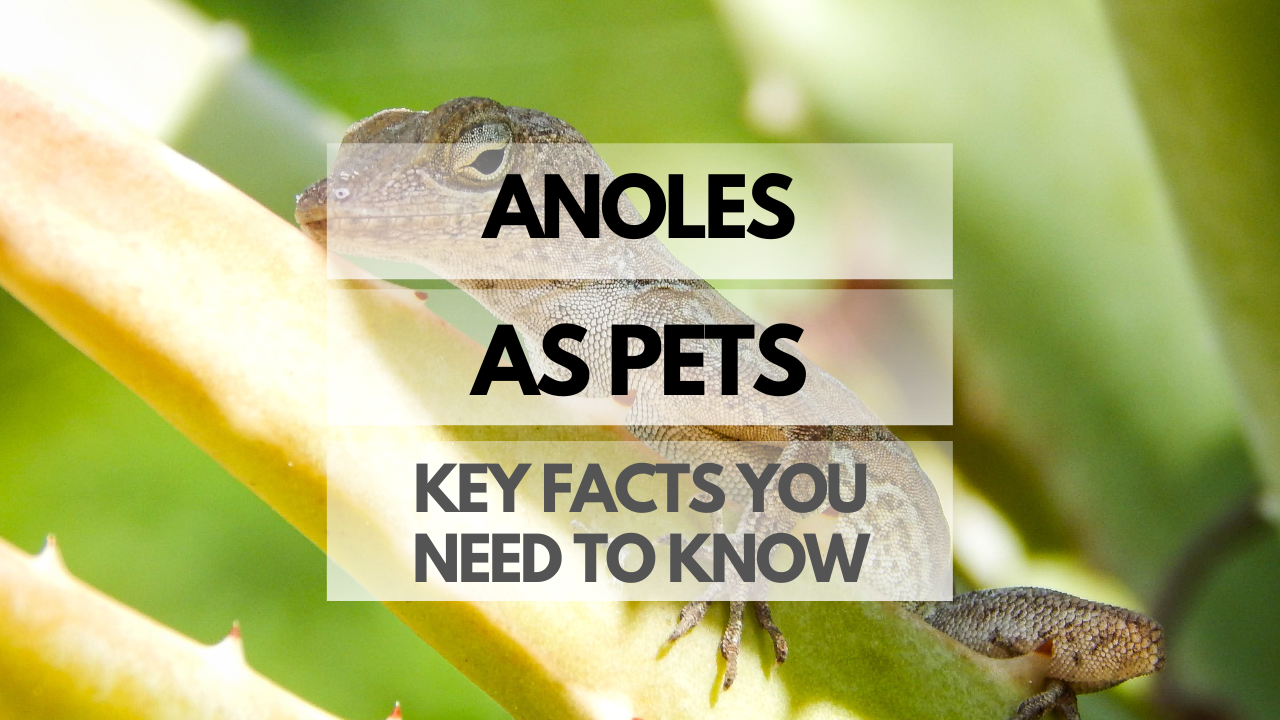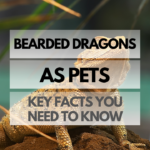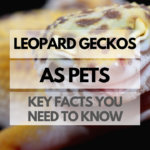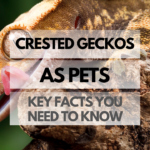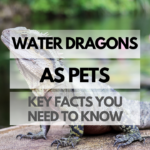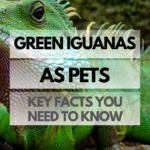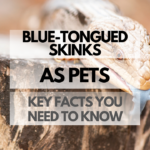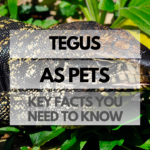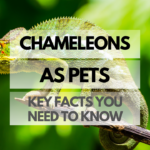Anoles, small lizards native to North and South America, have gained popularity as pets due to their unique appearances and fascinating behaviors. With over 400 species to choose from, there’s an anole for every reptile enthusiast. In this article, we’ll explore everything you need to know about keeping anoles as pets.
Quick Reference Table: Anoles Facts
| Fact | Details |
|---|---|
| Size | 3-8 inches, depending on species |
| Lifespan | 3-8 years, depending on species and care |
| Temperament | Active, curious, and territorial |
| Difficulty Level | Beginner to intermediate, depending on species |
| Cost | $10-$100 for the lizard, plus setup and ongoing expenses |
How Are Anoles as Pets?
Anoles can be fascinating pets for those who appreciate their unique behaviors and beautiful colors. They are generally low-maintenance and can be an excellent choice for a first-time reptile owner, as long as you’re prepared to provide the proper care and environment.
Pros and Cons of Anoles
Pros:
- Easy to care for
- Small size
- Active and entertaining
Cons:
- Can be territorial and aggressive toward other anoles
- Need a specialized environment
- Shorter lifespan compared to some other reptiles
Anoles Behavior and Temperament
Anoles are active, curious, and territorial creatures. They enjoy climbing and basking and will often display their unique dewlap, a colorful throat fan, to communicate with other anoles or establish dominance. While they can be handled, it’s essential to do so gently and not too frequently to minimize stress.
How Much Do Anoles Cost?
Anoles themselves can range from $10 to $100, depending on the species. Initial setup costs for a proper habitat can range from $150 to $300, while ongoing expenses for food, supplements, and electricity for heating and lighting will vary.
Anoles Lifespan: Time and Commitment
Anoles typically live between 3 to 8 years, depending on the species and quality of care provided. They require a consistent environment, diet, and cleaning routine, so be prepared to invest time in their daily care and habitat maintenance.
Anoles Size
Anoles can range from 3 to 8 inches in length, depending on the species. Most common pet species, like the green anole, are around 5 to 8 inches long.
Anoles Species
There are over 400 species of anoles, but we’ll cover some of the most popular species in the pet trade:
Green Anole
The green anole, also known as the Carolina anole, is a common choice for beginners. They are native to the southeastern United States and can change color from green to brown.
Brown Anole
Originally from the Caribbean, the brown anole is now common in Florida and other parts of the southeastern United States. They are slightly smaller than green anoles and have a more aggressive temperament.
Knight Anole
The knight anole is the largest species in this list, reaching up to 20 inches in length. They require a larger enclosure and are more suited for experienced reptile keepers.
Anoles Colors, Looks and Appearances
Anoles exhibit a wide range of colors and patterns, from bright greens to subtle browns. Some species can even change color depending on their mood or environment. They have slender bodies, long tails, and adhesive toe pads for climbing.
Anoles Care Guide
Anoles require a specialized environment and diet to thrive. In this care guide, we’ll cover the essentials of setting up a proper habitat and providing the right nutrition for your anole.
Anoles Habitat: Tank and Housing
Creating an appropriate environment is crucial for your anole’s health and happiness.
Appropriate Anoles Tank Size
A single anole needs at least a 10-gallon tank, while a larger 20-gallon tank is recommended for a pair. Vertical space is essential as they are arboreal, so choose a tall enclosure with plenty of climbing opportunities.
Types of Enclosures
Glass or screen enclosures with a secure lid are ideal for anoles. Glass tanks maintain humidity better, while screen enclosures provide better ventilation. A combination of glass sides with a screen top can work well, too.
Substrate Options
Substrates like coco coir, cypress mulch, or sphagnum moss work well for maintaining humidity. Avoid using sand, as it can cause impaction if ingested.
Heating and Lighting Requirements
Anoles need a basking spot with a temperature of 85-90°F and a cooler area around 70-75°F. Use a heat lamp or ceramic heat emitter to achieve the desired temperatures. They also require UVB lighting for proper calcium absorption and bone health.
Humidity and Temperature Control
Humidity should be maintained between 60-80%, depending on the species. Mist the enclosure daily and provide a shallow water dish to help maintain proper humidity levels. Use a digital thermometer and hygrometer to monitor temperature and humidity.
Furnishings and Decorations
Provide plenty of branches, vines, and live or artificial plants for climbing and hiding. Include a basking spot, like a flat rock or branch, near the heat source.
Cleaning and Maintenance
Spot clean the enclosure daily by removing any waste or uneaten food. Replace the substrate and clean the tank thoroughly every 4-6 weeks with a reptile-safe cleaner.
Anoles Food: Diet and Nutrition
A balanced diet is essential for anoles to thrive and display their vibrant colors.
Feeding Frequency and Schedule
Feed juvenile anoles daily and adults every other day. Offer as many insects as they can eat in 10-15 minutes.
What do Anoles Eat?
Anoles are insectivores and need a diet consisting primarily of live insects like crickets, fruit flies, and small roaches. Occasionally offer other insects like waxworms or mealworms as treats.
Anoles Treats
Small, soft-bodied insects like waxworms and mealworms can be offered as occasional treats. These should not make up the majority of their diet, as they can be high in fat.
Foods to Avoid
Avoid feeding your anole insects caught from the wild, as they may carry parasites or pesticides. Also, avoid insects that are too large or hard-shelled, as they can cause injury or impaction.
Supplements and Vitamins
Dust insects with a calcium supplement 2-3 times per week and a multivitamin supplement once a week to ensure proper nutrition. This is especially important for growing juveniles and egg-laying females.
Hydration
Provide a shallow water dish for your anole to drink from and mist the enclosure daily to maintain humidity. Anoles may also drink water droplets from the leaves and decor in their enclosure.
Handling and Socialization
Handling and socialization are essential aspects of anole care. With proper techniques, you can create a strong bond with your anole and ensure their well-being.
Taming and Bonding
Gradual and gentle handling helps build trust between you and your anole. Start by allowing them to become familiar with your presence, then slowly introduce your hand in the enclosure. Once they are comfortable, gently pick them up, letting them walk from one hand to the other.
Safe Handling Techniques
When handling your anole, be gentle and avoid grabbing them forcefully. Allow them to crawl onto your hand and use your other hand to support their body. Keep sessions short to minimize stress and always wash your hands before and after handling to protect their health and yours.
Signs of Stress and Illness
Anoles may display signs of stress, such as rapid breathing, darkening of color, or attempting to flee. If you notice these signs, give your anole time to rest and try again later. Monitor their health closely and consult a veterinarian if you see signs of illness, such as lethargy, weight loss, or changes in droppings.
Introducing Anoles to Other Pets
Introduce anoles to other pets with caution, as they can be territorial and aggressive toward other anoles or smaller animals. Observe their interactions closely and separate them if aggressive behavior occurs. It’s best to house anoles individually or with a compatible pair to avoid conflicts.
Health and Wellness
Proper health care and preventative measures are crucial for your anole’s long-term well-being.
Common Health Issues
Anoles can be prone to certain health issues, such as metabolic bone disease, respiratory infections, and parasites. Providing a proper diet, clean environment, and appropriate temperature and humidity levels can help prevent these issues.
Signs of a Healthy Anole
A healthy anole should have clear, bright eyes, a well-rounded body, and smooth, clean skin. They should be active, alert, and responsive to their environment.
Preventative Care
Regularly clean your anole’s enclosure, provide a balanced diet, and monitor temperature, humidity, and lighting to maintain their health. Schedule annual check-ups with a reptile veterinarian to catch any potential health issues early.
Finding a Reptile Veterinarian
Find a veterinarian experienced in reptile care to ensure the best care for your anole. Search for local reptile or exotic pet veterinarians and ask for recommendations from fellow reptile owners or pet stores.
Breeding and Reproduction
Understanding anole breeding and reproduction can be fascinating and rewarding for experienced reptile keepers.
Determining Gender
Male anoles typically have a larger dewlap, a wider head, and a hemipenal bulge at the base of their tail. Females are generally smaller and have a less prominent dewlap.
Mating Behavior and Courtship
During courtship, males display their dewlap and perform head-bobbing to attract females. They may also chase and mount the female to initiate mating.
Gravidity and Egg-laying
After mating, female anoles become gravid and will lay a single egg every 10-14 days during the breeding season. They bury their eggs in the substrate, so provide a suitable laying area in the enclosure.
Incubation and Hatching
Anole eggs can be incubated in a separate container with moist vermiculite or perlite at a temperature of 80-84°F. Eggs typically hatch within 30-45 days, depending on temperature and humidity.
Caring for Hatchlings
Hatchlings require a smaller version of the adult anole habitat, with appropriate temperature, humidity, and UVB lighting. Offer pinhead crickets and fruit flies as food, dusted with calcium and multivitamin supplements.
Are Anoles Legal?
Anoles are legal to own in most states and countries. However, regulations can vary, so always check your local laws and obtain any necessary permits before acquiring an anole.
Popular Names for Anoles
Choosing a fun and interesting name for your anole can be a delightful part of pet ownership. Here are some popular options:
- Emerald
- Chameleon
- Twiggy
- Jade
- Gecko
- Lizzy
- Oliver
- Camouflage
- Shadow
- Atlas
Conclusion: Should You Own Anoles as Pets?
Anoles can make fascinating and rewarding pets for those willing to invest in proper care, including appropriate habitat, diet, and health maintenance. They can provide a unique experience and a chance to observe fascinating behaviors up close. By being a responsible anole owner, you can ensure the health and happiness of your scaly friend for many years to come.
FAQ for Pet Anoles
- Q: Are Anoles good pets?
- A: Yes, Anoles can be good pets for the right owner, who is committed to providing proper care and attention. They are fascinating creatures and relatively low maintenance.
- Q: Can Anoles eat grapes?
- A: Anoles are primarily insectivores, and their diet should consist mainly of insects. Occasional fruit treats are acceptable, but grapes are not recommended due to their high sugar content.
- Q: Can Anoles eat bananas?
- A: Anoles can have a small piece of banana as an occasional treat, but their main diet should be insects.
- Q: Can Anoles eat strawberries?
- A: Anoles can have a small piece of strawberry as an occasional treat, but their main diet should be insects.
- Q: Can Anoles eat apples?
- A: Anoles can have a small piece of apple as an occasional treat, but their main diet should be insects.
- Q: Can Anoles eat spinach?
- A: Spinach is not a suitable food for Anoles, as they are primarily insectivores and should mainly consume insects.
- Q: Can Anoles eat tomatoes?
- A: Tomatoes are not recommended for Anoles, as they are primarily insectivores and should mainly consume insects.
- Q: Can Anoles eat carrots?
- A: Anoles should not eat carrots, as they are primarily insectivores and should mainly consume insects.
- Q: Can Anoles eat cucumbers?
- A: Cucumbers are not a suitable food for Anoles, as they are primarily insectivores and should mainly consume insects.
- Q: Can Anoles eat watermelon?
- A: Anoles can have a small piece of watermelon as an occasional treat, but their main diet should be insects.
- Q: Can Anoles eat broccoli?
- A: Broccoli is not an appropriate food for Anoles, as they are primarily insectivores and should mainly consume insects.
- Q: Can Anoles eat blueberries?
- A: Anoles can have a small blueberry as an occasional treat, but their main diet should be insects.
- Q: Can Anoles eat celery?
- A: Celery is not a suitable food for Anoles, as they are primarily insectivores and should mainly consume insects.
- Q: Can Anoles eat cabbage?
- A: Cabbage is not an appropriate food for Anoles, as they are primarily insectivores and should mainly consume insects.
- Q: Can Anoles eat cilantro?
- A: Cilantro is not suitable for Anoles, as they are primarily insectivores and should mainly consume insects.
- Q: Can Anoles eat kale?
- A: Kale is not a suitable food for Anoles, as they are primarily insectivores and should mainly consume insects.
- Q: Can Anoles eat blackberries?
- A: Anoles can have a small blackberry as an occasional treat, but their main diet should be insects.
- Q: Can Anoles eat oranges?
- A: Oranges are not recommended for Anoles, as they are primarily insectivores and should mainly consume insects.
- Q: Can Anoles eat avocados?
- A: Avocado is toxic to many animals and should not be fed to Anoles.
- Q: Can Anoles eat corn?
- A: Corn is not a suitable food for Anoles, as they are primarily insectivores and should mainly consume insects.
- Q: Can Anoles eat asparagus?
- A: Asparagus is not a suitable food for Anoles, as they are primarily insectivores and should mainly consume insects.
- Q: How often do Anoles eat?
- A: Adult Anoles should be fed every other day, while juveniles need to eat daily.
- Q: How long do Anoles live?
- A: Anoles can live for 4 to 8 years in captivity, depending on the species and the quality of care they receive.
- Q: Where are Anoles native?
- A: Anoles are native to North, Central, and South America, as well as the Caribbean.
- Q: Are Anoles friendly?
- A: Anoles can be shy and may not be as sociable as other pets, but with proper handling and trust-building, they can become more comfortable around humans.
- Q: Do Anoles bite?
- A: Anoles can bite if they feel threatened or stressed, but their bite is usually not very painful to humans.
- Q: Do Anoles like to be held?
- A: Some Anoles may tolerate handling, but they prefer not to be held for long periods. Frequent handling may cause stress, so it’s best to minimize handling.
- Q: Are Anoles nocturnal?
- A: Anoles are diurnal, meaning they are active during the day and sleep at night.
- Q: Do Anoles pee?
- A: Yes, Anoles excrete waste through a combination of urine and feces called “urate.”
- Q: Do Anoles hibernate?
- A: Anoles do not hibernate, but they may become less active during cooler months.
- Q: Do Anoles make noise?
- A: Anoles are generally quiet pets, but males can make a soft, clicking noise during mating displays or when establishing territory.
- Q: Are Anoles venomous or poisonous?
- A: Anoles are neither venomous nor poisonous.
- Q: Are Anoles smart?
- A: Anoles exhibit some problem-solving abilities and can learn to recognize their owners, but they are not considered highly intelligent animals.
- Q: Do Anoles need heat at night?
- A: Anoles need a consistent temperature gradient in their enclosure, including a cooler area at night. However, they generally do not require supplemental heat at night if their environment remains within the appropriate temperature range.
- Q: Do Anoles lay eggs?
- A: Yes, female Anoles lay eggs. They are oviparous, meaning they lay eggs that develop and hatch outside of the mother’s body.
- Q: Do Anoles smell?
- A: Anoles do not have a strong odor, but maintaining a clean and well-ventilated enclosure is essential to prevent unpleasant smells.

